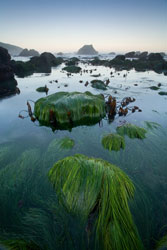African Seaweed database
Seaweeds are extensively used in cooking, as well as in the biomedicine and pharmaceutical industries. Moreover, the industry that has based its development on the cultivation of these algae is important for the economies of coastal regions. Africa, despite its enormous coastline, has not seen much development of this industry, except in Tanzania, South Africa and Mozambique. Particularly on the east coast of Africa, there seems to be little knowledge of the potential of this industry. There is little knowledge of the uses and rich biodiversity that exist, particularly in Namibia and on the west coast of South Africa. The SEAWEEDAFRICA project had as its main aim, to facilitate the acceleration of knowledge dissemination by creating a seaweed database. Creating this nomenclature and taxonomic source would enable information to be stored according to ecological, commercial and technological data. The principal technical priorities of this database are that it would be comprehensive and that it would allow for ease of access by the interested end users. An information pack has also been put together and has already been forwarded to a list of target end users. It is in the format of a CD and includes: a power point presentation on the SEAWEEDAFRICA project and its background, in addition to an introduction to the project website. Furthermore, check lists have been put together from, South Africa, Namibia and Kenya. These lists make explicit the various commercial species and legislation for selected African countries, and include pictures, organised according to country and commercial species. The information pack also contains a reference list of all papers on the subject and the questions addressed by the database. There is also a list of the potential uses of seaweeds throughout the world at the present time, including possible pharmaceutical and biochemical uses.







